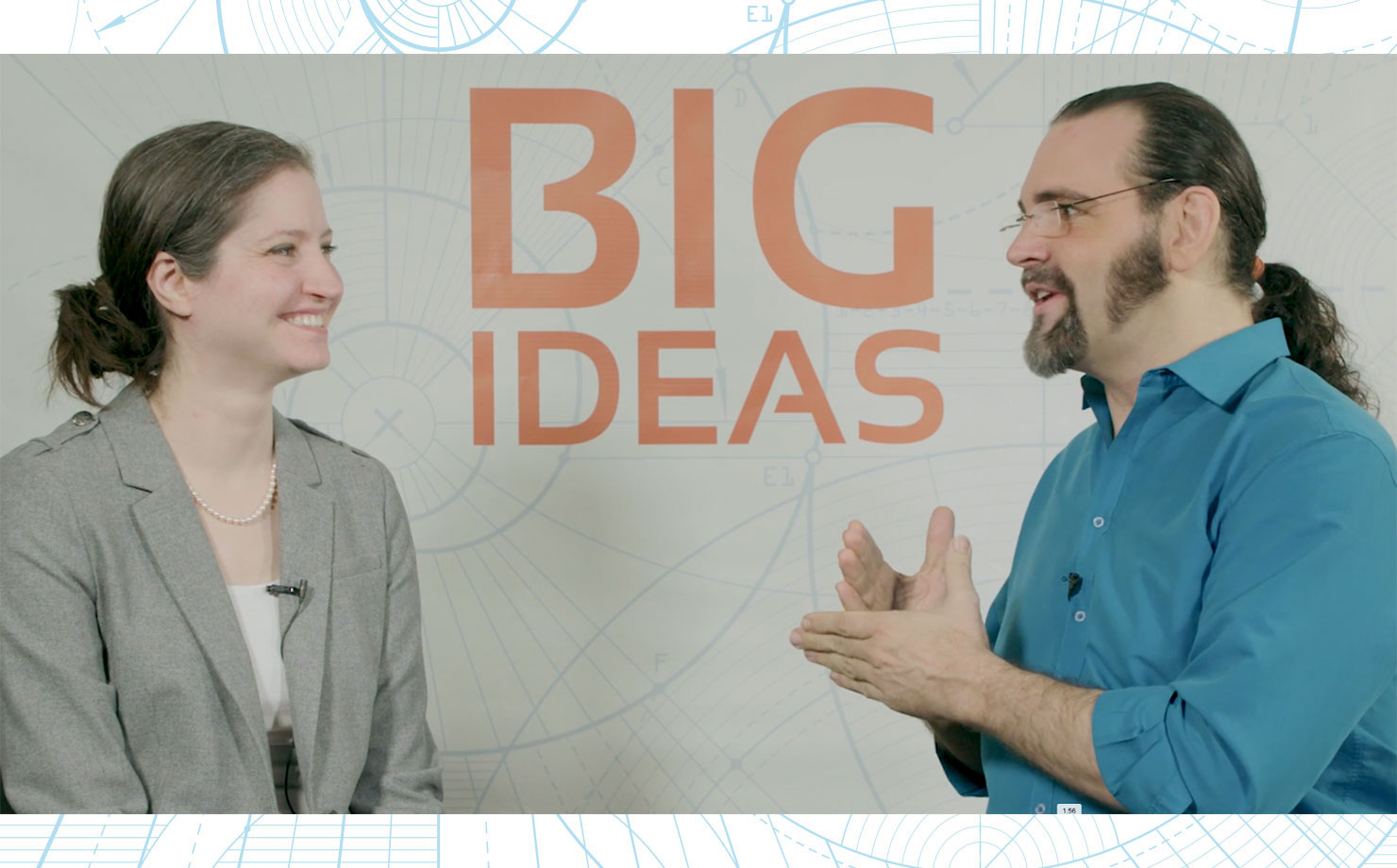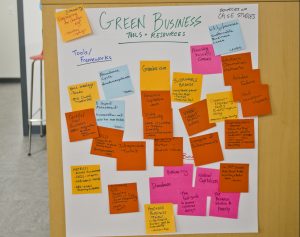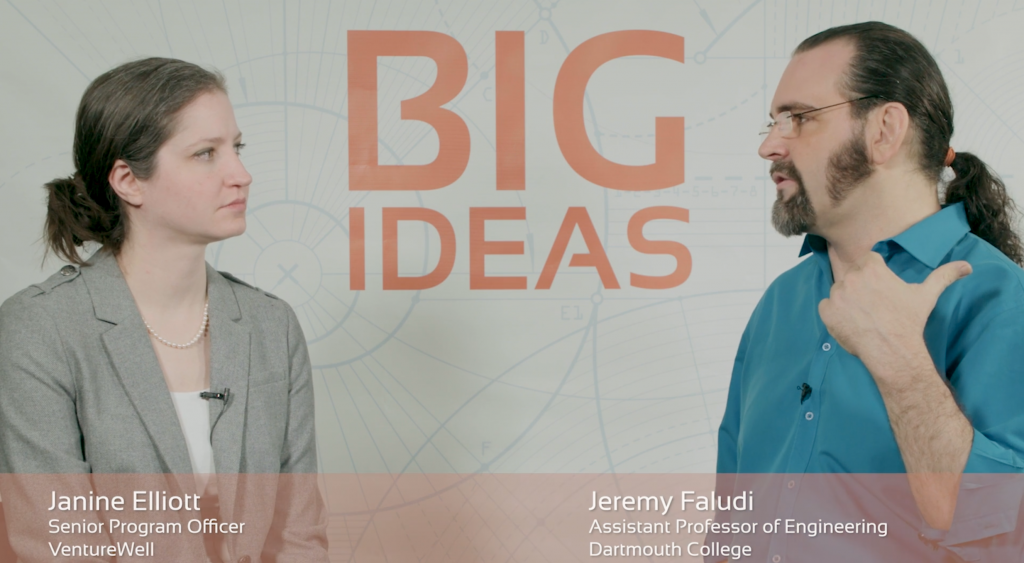
Many of today’s engineers will become tomorrow’s inventors and entrepreneurs. They can play a unique role in reducing the negative environmental impact on our planet. The challenge is providing early-stage inventors with the appropriate resources to consider the sustainability implications of their innovations throughout their educational journey.
That’s where faculty and higher education administrators can help. But as we’ve discussed on our blog before, many faculty struggle with how to incorporate principles of environmental responsibility into existing coursework.
During our OPEN 2019 conference, Janine Elliott, senior program officer at VentureWell, spoke with sustainable design strategist, Jeremy Faludi, to discuss ways faculty can effectively integrate principles of environmental responsibility into an engineering curriculum. Faludi created the Tools for Design and Sustainability, an online guide to help student inventors understand and apply sustainable design methods into their work.
The following is an excerpt of their conversation.

Elliott: As a faculty member, tell me how you made some small adjustments to your core curriculum to build a sustainability mindset in your students.
Faludi: I taught a mechanical engineering class. Students learned about robotics and material strength by actually building robots. I used to ask them to participate in a contest that measured how many ping pong balls their robots gather. I made a small tweak to the contest that introduced principles of environmental responsibility. I changed the rules to reward students for gathering the most ping pong balls while using the least amount of energy.
There was very little difference in the actual curriculum, but the shift in contest rules changed their mindset to think more about sustainability. Specifically, the course content relative to material strength and energy usage took on new relevance. When building a robot to get a task done, it’s easy to overbuild it and not consider the weight or energy usage. But if you’re trying to do it with the least amount of energy, suddenly the weight of your robot matters.
Elliott: How can faculty provide students with more real-world applications to integrate principles of environmental responsibility into their projects? And how does industry benefit from this collaboration?
Faludi: There’s great value in having student teams do projects with companies. It not only gives the students experience with real-world constraints and priorities, but even more important, the students educate the company representatives. This is important because even if students have great sustainability skills and graduate today, it’ll be years before they’re in positions of power to execute on those skills. We need to educate the people running product development today, who will likely never go back to school.
Elliott: How can higher ed administrators support faculty working to integrate principles of environmental responsibility into their curriculum?
 Faludi: There are opportunities for administrative leadership to help because administrators can say, for instance, “Let’s have an award of recognition for faculty that integrate sustainability into campus-wide projects.” You don’t even necessarily need to give them money, although that would certainly help if you have the budget.
Faludi: There are opportunities for administrative leadership to help because administrators can say, for instance, “Let’s have an award of recognition for faculty that integrate sustainability into campus-wide projects.” You don’t even necessarily need to give them money, although that would certainly help if you have the budget.
Administrators can also develop an award that will count toward a tenure scorecard if you work with facilities and do some greening on campus, or if you can show that you’ve integrated sustainability into your classes in various ways. Administrative resources can also be allocated to support faculty. For instance, spending admin time to help people coordinate activities or research curriculum ideas.
Elliott: Sometimes faculty members are not sure where to start when it comes to integrating principles of environmental sustainability into their curriculum. Do you have any advice to help them integrate these principles into their courses?
Faludi: I suggest exploring existing resources such as the Tools for Design and Sustainability and the Inventing Green Toolkits. These resources allow you to learn more about the topic as well as practice the exercises before asking students to do them. That helps you become a little more comfortable with the concepts.
You can also look for more specific resources such as material databases to find green materials, life cycle assessments for various materials and energy usage, or links to books to learn more about inventing green.
If you prefer more in-depth training, there are train the trainer events such as the Green Launchpad Educators Workshop, which will teach you how to integrate sustainable invention and innovation curriculum and practices into your courses, whether they are existing core courses or sustainability-specific ones.
Innovation and entrepreneurship will play a significant role in solving current and future global environmental issues. There’s a tremendous need to prepare tomorrow’s inventors and designers for these challenges—today. Looking ahead, we’ll see more collaboration between sustainability-focused thought leaders, faculty, and organizations to create ways to integrate this important initiative into curriculum to empower tomorrow’s sustainable designers.
Watch this video to learn how Faludi introduced principles of environmental responsibility into his course.
VentureWell Course and Program Grants provide up to $30,000 to faculty or staff with innovative ideas to help students hone the skills needed to create novel STEM-based inventions and bring their ideas to market.
